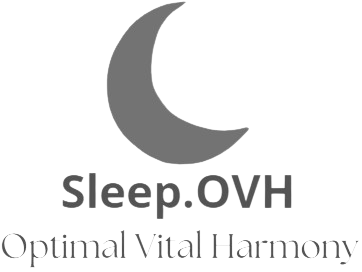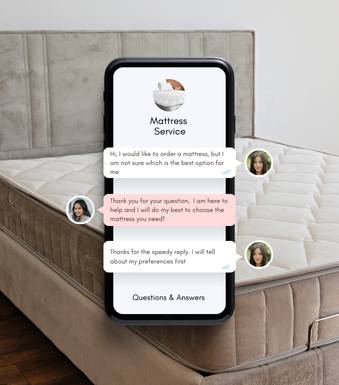
Imagine this: it’s mid-afternoon, and your eyelids feel heavier than a sack of potatoes. Your mind is foggy, and that to-do list seems to grow longer by the minute. What if I told you there’s a simple solution? Enter napping—the underrated hero of productivity.
Naps have often been dismissed as indulgent or lazy. But in reality, they can be one of the most effective tools in your arsenal for tackling fatigue and boosting performance. Whether you’re a student cramming for exams or an office worker staring at spreadsheets all day, understanding how to nap effectively could change the game entirely.
So let’s dive into why naps matter—and how you can make them work for you!
The Benefits of Napping
Napping offers a range of benefits that go beyond just catching a few extra z’s. For starters, it can significantly enhance cognitive function. Studies show that a short nap can improve memory retention and boost creativity.
Physical health also gets a lift from napping. A quick snooze lowers stress hormones, which helps your heart stay healthy and reduces the risk of chronic illnesses.
Mood elevation is another perk. Feeling grumpy or irritable? A brief rest can brighten your outlook and increase overall emotional resilience.
Moreover, napping can be an excellent way to recharge during long workdays. Just 20 minutes of shut-eye can provide an energy boost without leaving you groggy afterward.
In a world where hustle culture dominates, embracing the art of napping might just be one of the best self-care practices you adopt!
The Science behind Napping
Napping isn’t just a luxury; it’s backed by science. Research shows that short periods of sleep can significantly enhance cognitive function and mood.
When you nap, your brain enters different stages of sleep. The light stages allow for quick recovery, while deeper phases enable memory consolidation. This is crucial for learning.
Studies indicate that a 20-minute nap improves alertness and performance without causing grogginess. However, longer naps may lead to sleep inertia—a foggy feeling upon waking.
The timing also matters greatly. Napping too late in the day can interfere with nighttime rest, disrupting your overall sleep cycle.
Understanding these elements helps maximize napping benefits and align them with daily activities for optimal productivity.
Types of Naps
Naps come in various forms, each serving a unique purpose. Understanding these types can help you choose the right one for your needs.
A power nap lasts around 10 to 20 minutes. This quick boost recharges your energy without making you groggy. It’s perfect for that mid-afternoon slump.
The classic nap usually spans 30 minutes to an hour. This duration allows your body to enter light sleep, enhancing alertness and cognitive function upon waking.
Long naps extend beyond an hour and can take you into deeper sleep stages. While refreshing, they may leave you feeling drowsy if interrupted during this cycle.
There’s the recovery nap, aimed at catching up on lost sleep from previous nights. These are longer and should be planned when you’re particularly fatigued or after long shifts.
Choosing the right type can significantly improve how refreshed and focused you feel afterward.
How to Determine the Best Time to Nap
Determining the best time to nap can significantly enhance its effectiveness. Pay attention to your natural energy patterns. Many people experience a post-lunch dip around 1 PM or 2 PM, making this an ideal time for a quick recharge.
Consider your personal schedule and commitments. If you have flexibility, try napping when you feel that familiar slump creeping in. Avoid late afternoon naps, as they may disrupt your nighttime sleep.
Keep track of how different nap times affect your mood and productivity. This trial-and-error approach helps pinpoint what works best for you.
Take note of external factors too—light levels and noise can influence how restful a nap is. Creating a calming environment will boost the quality of your rest.
Be mindful of how long you’ve been awake before napping; longer stretches without sleep typically lead to more pronounced fatigue by early afternoon.
Tips for Effective Napping
Finding the right environment is crucial. Choose a quiet, dark space where you can relax without interruptions. A comfortable chair or your bed works well.
Set an alarm to avoid oversleeping. Aim for 20-30 minutes to feel refreshed without entering deep sleep.
Consider using a sleep mask or white noise app if external light and sounds disturb you.
Timing matters too. Early afternoon is often ideal because it aligns with natural dips in energy levels.
Breathing exercises can enhance relaxation before drifting off. Deep breaths help calm your mind and prepare your body for rest.
Stay consistent with napping habits if possible. This trains your body to recognize when it’s time to recharge, making each nap more effective over time.
The Dos and Don’ts of Napping
Napping can be a wonderful way to recharge, but there are some guidelines to follow.
Do keep it short. Aim for 20-30 minutes. This duration helps avoid grogginess and keeps you refreshed for the rest of your day.
Don’t nap too late in the afternoon. Late naps can interfere with nighttime sleep cycles, making it harder to fall asleep later.
Do create a comfortable environment. Find a quiet space where you won’t be disturbed. Dim lighting or an eye mask can enhance relaxation.
Don’t rely on naps as your primary source of rest. While they’re helpful, ensure you’re still getting enough quality sleep at night.
Do listen to your body’s signals. If you’re tired during the day regularly, consider adjusting your overall sleep schedule rather than relying solely on naps.
Avoid caffeine before napping; it might hinder falling asleep quickly and negate the benefits of resting.
Incorporating Naps into Your Daily Routine
Incorporating naps into your daily routine can be a game-changer. Start by identifying the time that works best for you. This varies from person to person, so pay attention to when you feel most tired.
Aim for short naps of 20-30 minutes if you’re new to napping. This duration helps boost alertness without leaving you groggy afterward. If you have more flexibility, a longer nap of about 90 minutes allows your body to complete a full sleep cycle, promoting deeper rest.
Create a conducive environment for napping. Find a quiet spot with dim lighting or use an eye mask and earplugs if needed. Keeping the room cool can also enhance relaxation.
Be mindful of your overall schedule as well; try not to nap too late in the day since it might interfere with nighttime sleep patterns. Experiment with different times and durations until you find what suits you best.
Listening to your body is key here—it knows when it’s ready for rest! Making naps part of your regular routine could lead to improved mood, better focus, and increased productivity throughout the day. Embrace the power of napping and enjoy its myriad benefits as they unfold in your life!









